Every now and then your espresso gear will need cleaning. You wash the portafilter and baskets after every use, clean the driptray at least once every few days (i hope) and wipe down the rest of the machine every so often. But what about the inside of the boiler? You can’t just reach in with a brush and start scrubbing around. Well you could but it’d be a lot more trouble than i would want to go through. Especially on a Tuesday morning before (!) i had my first espresso.
- Plenty of calcium buildup
- Time to descale
Descaling
There are a lot of ways to descale, some people use vinegar (diluted or undiluted) but a common practice is to use pure citric acid. You can buy it at most drugstores, but be sure to check that it is purely citric acid and doesn’t contain anything else! A little heads-up, do not eat or drink it, get it in your eyes, open wounds or anything else because the stuff is not good for you. If you accidentally spill it on the chrome of your La Pavoni, wipe it off immediately because citric acid will damage chrome (not instantly but it certainly doesn’t do it any good)! Keep a couple of paper towels handy. Keep your workstation, tools and accessories clean.
- 50 grams Citric Acid and 1 Liter warm Tapwater
- All mixed up and completely dissolved
- Boilerpressure rising just before i shut it off
Never let the Citric Acid solution enter the grouphead or steamwand
The inside of the grouphead on the La Pavoni Europiccola and Professional is also chrome plated. If it comes in contact with the citric acid the chrome will start chipping and flaking off. The surface inside the grouphead is where the piston and its rubber seals slide along, if that surface is damaged the seals will eventually start leaking and simply replacing them will be nothing but a temporary solution. Eventually you will have to remove the grouphead and have it re-chromed or replaced, not cheap.
Cleaning some more
- Grounds!
- Drape a cloth over the base and driptray
- Bend the brush
- Brushy Brushy!
- And done.
- Old grounds removed
Rinse and repeat
- No more calcium
- And everything looks nice and clean
- Heating up with a kettle on a piece of cloth
- Purging the steamwand
As you can see i had the portafilter with a single basket locked in the grouphead, if you don’t have a bottomless portafilter do not use it while purging the grouphead, the water will shoot out of the spout(s) and end up on the walls left (and right) of the machine, not in the kettle. The only reason i locked it in was because i wanted to flush some water through the basket that had been in a citric acid solution as well.
Conclusion
- Finally!


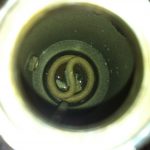
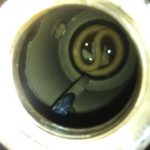
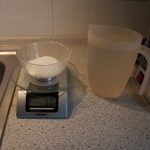
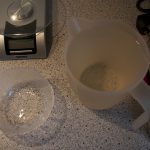
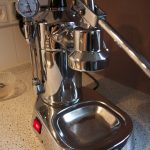


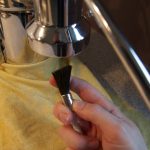

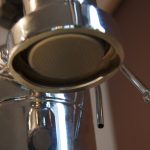
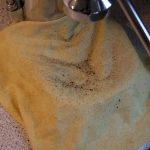

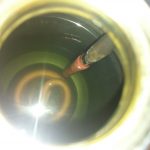
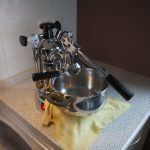
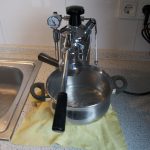

Well documented!
Thanks 🙂
“… if it helps anyone that’s all i care about.”
It’s helped me. Thank you for your time and effort, Sebastiaan!
Awesome =) Warms my heart!
Thank you very much! I am cleaning my machine right now following your instructions. Great article!
Thanks for the guide!
Glad you liked it!
Just a warning to be very very careful when using pure citric acid. It is not buffered and when I tried it on my La Pavoni Professional, I had disastrous results. That’s because the inside of the boiler is also chrome-plated brass. When I used a very diluted citric acid solution (1tsp/liter) and left it for 1 hour in hot water, it stripped all the chrome plating off the boiler, now instead of chrome, it is exposed orange brass. This is very bad, as it’s more vulnerable to corrosion than the chrome plating. Also, if you fill the water up to the top, the top part of the inside of the chrome plated group head will also be exposed to the citric acid, and can strip that as well. This also happened to mine. I highly recommend using a professional descaler instead.
Hi Monnie,
There are a very small number of manufacturers that had a short amount of time where they chrome plated the inside of boilers too, that’s correct. If you see any sort of chrome inside the boiler (always look before you act!) then don’t use citric acid. As I mentioned in the article, citric acid and chrome do not get along and chrome will lose that battle every single time. Now, that said, boilers that have been chromed on the inside are rare and a bad practice to begin with. Usually it’s being done to cover up small blemishes. But the real problem with chrome inside a boiler is that eventually it’ll start flaking off. Those flakes will then end up in the water inside your machine, traveling towards your grouphead or, even worse, being shot out of the steam wand when you’re steaming milk for your cappuccino… The grouphead by the way, is not chrome plated on the inside.
As for the brass corroding more easily, that’s really not an issue at all. Yes, if you leave it bare (ie. little or no water contact), don’t clean it, and generally neglect it then yes eventually you’ll see some corrosion. But the best part is that you can get rid of that corrosion using some citric acid, although it’ll take a little longer. The brass itself is not harmful at all, won’t influence the taste of the water or anything else. Having flakes of chrome in your steamed milk or coffee however is very unhealthy.
Thanks so much for your reply, I do have a ‘transitional’ model with the pre millennium group/piston and the rest millennium parts. The chrome didn’t flake off, it just dissolved into microscopic shimmer. And you put my mind at ease about the corrosion factor. You mentionedis the grouphead is not chrome plated on the inside but your article said “The inside of the grouphead on the La Pavoni Europiccola and Professional is also chrome plated.” Anyway, I’m pretty sure mine is, as the bottom half of the neck (where the group meets the boiler) is now a brass color and the part that the citric acid didn’t touch is still chrome. I followed the descaling videos from seattle coffee/orphan espresso and I was a little upset that none of them mentioned anything about the citric acid being corrosive to chrome. That is why your article is awesome and I wish I read it before descaling my unit. Despite everything, my shots are much better now that I’ve descaled/cleaned everything, so I do highly recommend it, just be careful with the chrome parts!
Chrome in contact with citric acid will dissolve, but under normal circumstances chrome will flake off. As for the grouphead, you got me there. The grouphead is partially chrome plated. The outside obviously, and part of the inside too. The opening in the boiler that the grouphead is attached is actually not a passage way directly into the grouphead. In fact that opening is closed off in the grouphead and isn’t chrome plated (which is what I meant). The water from the boiler enters the grouphead through a copper riser tube that you can see entering the boiler through that opening. Once the water in the boiler heats up the built up pressure will force the water up the riser tube into the grouphead. For that to happen, the piston (and lever) need to be in the up position, otherwise the riser tube is blocked off from the other end and the water won’t rise.
As long as you keep the lever down during the time you have citric acid in your boiler none of that will make it into the grouphead itself.
Now, inside the grouphead where the piston moves up and down there is a chrome plating. That chrome plating is there to create the best possible seal with the rubber seals. A machined brass surface would work too but isn’t nearly as smooth as a chrome plating. Not only would that cause a loss of pressure, it would also wear down the rubber seals faster.
By the way, keep an eye on the remaining chrome inside your boiler. The chrome and interface layers (the layers between the chrome top layer and the brass itself) have been compromised and as a result are more prone to flaking. At the very least keep an eye on the remainder of the chrome and in particular the edges.
Quick follow up: See this diagram that I quickly drew up to clarify myself:

The cavity in the left side of the grouphead matches up against the opening of the boiler. However that hole is closed, you can see the riser is what actually provides a pathway for the water to flow into the actual piston chamber of the grouphead. As long as the piston is down there is no way for the water to flow through that area.
Thank you for the diagram. I took some photos of the citric acid damage inside the boiler and shaft. Please let me know what you think I should do, as there is still limescale I need to remove but now I am afraid…Thank you!



Boiler walls used to be chrome, now it’s greenish yellow with orange patches:
Notice the strong line where citric acid water was filled up to:

Even inside the shaft (from your drawing above) there is orange discoloration:
(small edit, I hosted the pictures for you for future reference)
Ah, what you have inside that boiler isn’t actually chrome. The photo where you see the clear line shows brass below the “line” and a nickel plating above it. Nickel plating is usually used as an interface layer between the base metal and chrome or just to hide small blemishes. The darker or red spots on the brass are most likely copper sediments that settled on a slightly rougher part of the boiler. Nothing to worry about. Both copper and brass are food safe. Nickel (unless you have an allergy to it, but you would’ve known by now ;)) is mostly safe too.
However, much like chrome, nickel will flake when compromised. In your case I’d say that is very much the case. Personally I’d reattach the entire grouphead, piston and lever included, and fill the boiler almost to the brim with citric acid. You can use a more diluted mixture since you don’t need to have it too aggressive as there is barely any scale left from what I can tell from the pictures. Turn on the heating element, let the boiler warm up so it’s warm to the touch and make sure it doesn’t overflow. Turn the heat off, unplug, and let the citric acid remove the rest of the nickel. When you’re comfortable with the results, empty the boiler, and rinse it several times with clean tap water. Run plenty of water through the grouphead too.
Ninja edit: I’m not entirely sure what I’m seeing in the photo of the back of the grouphead though. It could be that the inside of that is actually chrome plated. However, there’s one spot just left of the riser tube where it seems that the chrome plating, nickel plating is gone to the point where the bare brass is visible. Not a big deal but you’ll want to get rid of the rest of that plating too so using citric acid will help there as well.
Lifesaver, thank you! I will try that…
Hi there! I wish I had read your article two hous ago. I tried to descal my La Pavoni PC-16 with a product calle DEZCAL. Right after I turned on the machine, when it reached the right pressure, it started to leak from the bottom of the base. I don’t know if the product acted on the gaskets or something like that. It it leaking a lot. Well, not anymore, cause I have washed everything away, rinsed three times and emptyed the boiler. Any recommendations on what to do next? Send it to service? Well, i guess no more coffee for a while… 🙁
Thank you!
Hi Andre, there’s a good chance that any descaling method would’ve resulted in this outcome. The scale build up inside the boiler might have been sufficient to keep the old seal from leaking. There quit a big gasket that seals the bottom of the boiler and if that needs replacing I’d suggest handing it to someone who’s done it before since there are models that have plastic collars that break very easily.
Hi Sebastiaan!
Thank you for the info. My machine is from 2008 but i’ve purchased new last year since my old PC-16 was too beaten up and to fix it would cost me almost the price of a new one. Anyway, I’ve done the gasket replacement before but I would rather to hand the machine to a professional. The thing is I live in Brazil and there’s no service for it down here. I’d have to send to the US or Europe as I’ve done with my old one. Too much work and too much time. I think I’ll do it myself. God help me. Thank you for the reply.
Best regards.
Well if you’ve done the replacement before you at least have an idea of what you’re doing. Shipping your espresso machine for service is never fun. It takes time and you never know what’ll happen to a package. Shipping something out of country only adds to that.
All that aside, if you’ve had the machine for about a year though and it got a new seal since then, it really shouldn’t be leaking already. You might want to fill up the boiler, let it warm up and keep a close eye on the bottom of said boiler. That way you at least know exactly where it is leaking. Just make sure you unplug it before tilting the machine to gander a look!
Thanks very much for the cleaning advice, Love my La Pavoni
Clean espresso machines make better coffee 😉
Good one… I’ve had 2 since I was 28 and am now 69. The parts people on both coasts know me (but the guy in SF’s SON has finally retired) as I do a complete rebuild every 3 or so years. Daily fix is a Double Dopio so my “truest nature” is jazzed. But that’s it for the entire day. No more coffee until the next morning. Plus, I get my girl(s) hooked so my machines have seen some solid use.
I really have never scaled at all (sound like the guy who swears on never changing his oil?) but have periodically used bottled/distilled water if where I was living had very tough water (try Boulder City, outside Vegas or Goldfield, NV). But based on your article above, I am gonna give the Citric Acid a good shot. Maybe my Pavoni will be ready sooner/faster than I am now used to? We’ll see.
But! The one thing I have had happen to both pro machines (1- chrome and 1- copper/gold colored) is the exit places where the steam wand exit and the pressure relief valve exit are both stove in. This doesn’t seem to happen on moves, where I always treat my Pavonis to front seat or rear floor privilege, I just think it’s happened when the machine gets hot and the metal gets soft. Anybody else? Any ideas on how to fix? Wouldn’t bother me, but the steam wand sinking into the boiler is putting the wood handle very close to the Pressure Monitor and that is HOT!
Thanks and don’t chuck your old machines, send them to me!
Wick